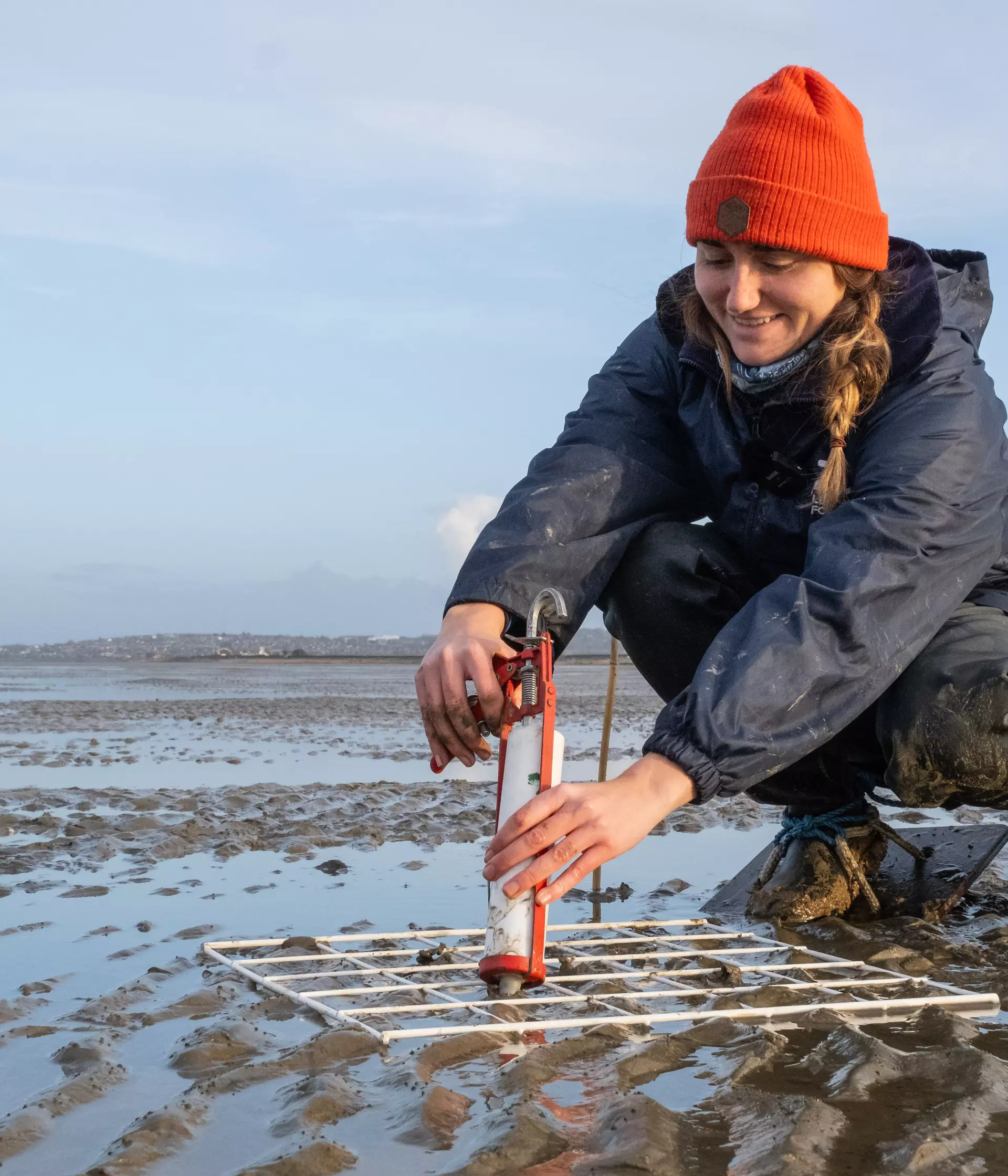An ambitious project to restore seagrass meadows in Kent has launched by conservationists working to rebuild the Thames Estuary ecosystem.
Working to help protect this habitat and reverse recent declines, conservationists from the international conservation charity ZSL are for the first time planting tiny seeds from dwarf eelgrass (Zostera noltii) across three sites in Kent including Seasalter and Elmley Nature Reserve as part of trials for the restoration of these vital, biodiversity-boosting underwater meadows.
Seagrass, the only flowering plant to grow in seawater and found gently swaying in shallow waters on coastlines across the world, plays an essential role within these marine ecosystems – offering food and shelter for the animals that live beside and amongst it – from seahorses to sharks. However, research has shown that least 44% of seagrass has been lost from the UK coastline since 1936.
Thea Cox, a Conservation Project Manager at ZSL said: “Seagrass seeds may be small, but each one is vital to recover this extraordinary habitat. Seagrass meadows provide essential nursery grounds for fish, food for birds, and habitat for a range of invertebrates – meaning they play a vital role in the health of marine habitats. Many seagrass species also help absorb and store carbon within their tissues and the sediment – meaning they can also play an important role in tackling climate change.”
Almost half of seagrass in the UK has been lost in the last 90 years – with 39% of that loss having happened since the 1980s. However, with evidence-based conservation action, we have the chance to reduce the pressures on this incredible habitat and restore lush green meadows at scale.”
This December sees the team trialling and refining methods to plant seeds from dwarf eelgrass -, one of two eelgrass species that grows in UK waters – each one similar in size to a sesame seed. Through the use of a modified sealant gun and guidance from experts in the Dutch Wadden Sea who developed this method , the team are able to carefully inject precise amounts of a mud and seed mixture into the ground at the trial sites, and will continue to monitor these sites over the coming months as the eelgrass grows. This follows on from work earlier this year trialling the transplant of adult dwarf eelgrass plants. Learnings from other seagrass restoration projects across the UK and Europe and from these Kent-based trials, though currently small-scale, will provide important information for scaling up restoration efforts in the Thames estuary.
One of 72 seagrass species and found across coasts globally - including in Scotland and the Thames Estuary - dwarf eelgrass provides essential overwintering food to birds including brent geese, mute swans and wigeons.
Thea added: “The reason we’ve seen such drastic declines in seagrass cover in the UK is likely a combination of factors – such as reduced water quality and caused by pollution, physical disturbance of meadows and industrial development. Restoration work is just one part of the picture to create more and healthier seagrass beds – we also need action to address the threats, thereby protecting existing meadows as well as creating the conditions to maximise the chances of restoration success at scale.”
In addition to support for restoration projects, the conservationists behind the Kent-based work are calling on decision-makers to safeguard the seagrass habitat that we already have through mapping and monitoring the health of existing meadows, along with implementing measures to minimise pressures to those areas where possible.
This work is made possible through collaboration and knowledge sharing with organisations including The Fieldwork Company, University of Groningen, Project Seagrass, and Office Francais de la Biodiversite, with funding from Garfield Weston Foundation, Orsted and Marshall Wace TOPS (ESG) Foundation.
The seagrass restoration trials are part of a larger ZSL-led project called Restoring the Thamescape, which aims to restore coastal habitats in the Thames through restoring multiple habitats together, including native oysters and saltmarsh. The project began in 2021, with the team mapping the locations of existing seagrass meadows and oysters to understand where restoration efforts should be focused. Through this holistic, multi-habitat approach, the project accounts for the interconnected nature of habitats and will help amplify the functions that they provide.
Climate change and human activity have pushed our precious planet to its limit, causing the devastating loss of so many habitats and species. From lab to field, hands on and behind the scenes, we’re leading the future of conservation, shaping agendas and
